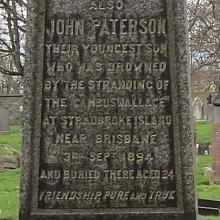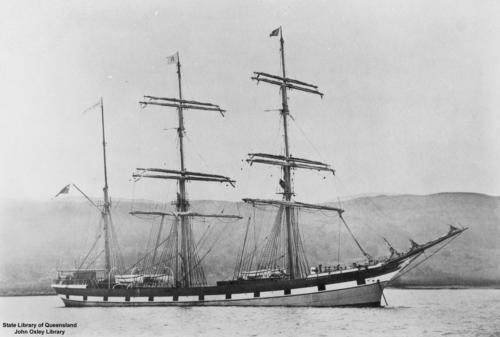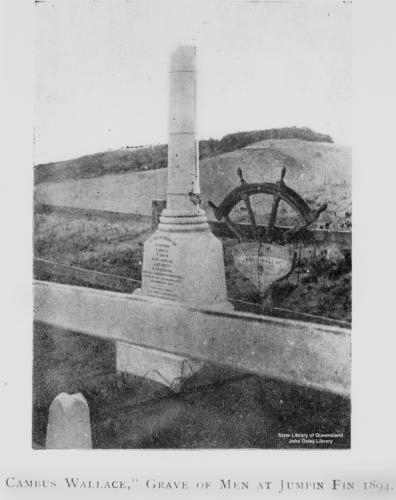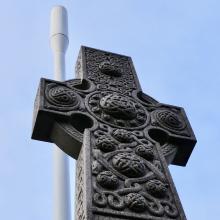
LOCAL MAN'S LAST HOURS RECALLED
A long wander about Rosebank Cemetery yesterday, and an unexpected glimpse of tempest and terror on the far side of the world.
Able Seaman John Paterson was one of 27 crew who sailed from Lamlash on Arran on 3 May 1894. Under the command of Captain William Leggat, the three-masted steel barque Cambus Wallace was on her maiden voyage, bound for Brisbane with a cargo of whisky, beer, pig iron, salt, fancy goods and explosives.

This was to be their last sight of land until, after 121 days, they ran aground on a sandbar 200 yards off Stradbroke Island, New South Wales. The voyage, reported the Brisbane Courier two days later, had been a succession of storms after passing the Cape of Good Hope, with four gales striking the ship in her last week and carrying away boats and sails, stoving in the iron wheelhouse, and causing one of the crew to break his ribs.
On Sunday last, although the weather was very misty, the captain managed to take observations, and estimated that his vessel was thirty-five miles off the land. A northerly course was then shaped. On Sunday evening the barque was hove to, and a man was sent aloft to the top gallant yard to keep a lookout for the land.
At 4:45a.m. on Monday, the weather being very dirty and it being almost impossible to see for any distance, the mate called the captain and told him to come on deck before the vessel struck.
[…] Totally unexpected as the accident was, everything was in the utmost confusion on board […] at the moment the nature of the catastrophe became apparent. Seamen rushed on deck with life-saving appliances, which they were endeavouring to fasten about their bodies, and during the first shock acts of bravery amounting to heroism were contrasted with deeds which can only be characterised as foolish.
The steward – presumably in a blue funk – locked himself in his cabin and refused to come out. Nothing more was seen of him. As mountainous waves broke over the ship, vain attempts were made to launch lifeboats, and to swim ashore with a line. Various portions of the crew took refuge in the poop and rigging, were washed away or risked all and swam for shore. Captain Leggat and three boys eventually made it to land in a half submerged boat. It’s not clear from the accounts of eye-witnesses at which precise stage 24-year-old Paterson entered the water.
Within 12 hours the Cambus Wallace had broken up. Only the bowsprit, a portion of the stern, and a few broken timbers remained to be seen. The ship’s figurehead was later recovered and displayed.

Most of the crew managed to swim ashore, where – much knocked about and stripped naked by the waves – they struggled to clothe themselves in rags and bits of wreckage, and waited for help. Paterson along with two other able seamen, the steward, cook and ship’s carpenter were drowned or – in the case of one old salt – died soon afterwards from exhaustion. All but the steward were buried within hours on the beach.

Locals later piled up and detonated the dynamite which had washed ashore, the effect of which was to weaken the island’s dune system. Within two years, a violent cyclone and high tides had created the new Jumpinpin Channel which washed away the sailors’ graves and a modest memorial there to them.
Such is the transient nature of life and death at sea. There is now a themed bar named after the Cambus Wallace at Nobby Beach on the Australian Gold Coast.—AM
[The family is hard to trace in local Post Office Directories of the period. If any reader has access to genealogical websites/databases, it would be great to know where parents James McGrath and Jane Paterson (died 28 June 1923, aged 70) lived and brought up their children.]



